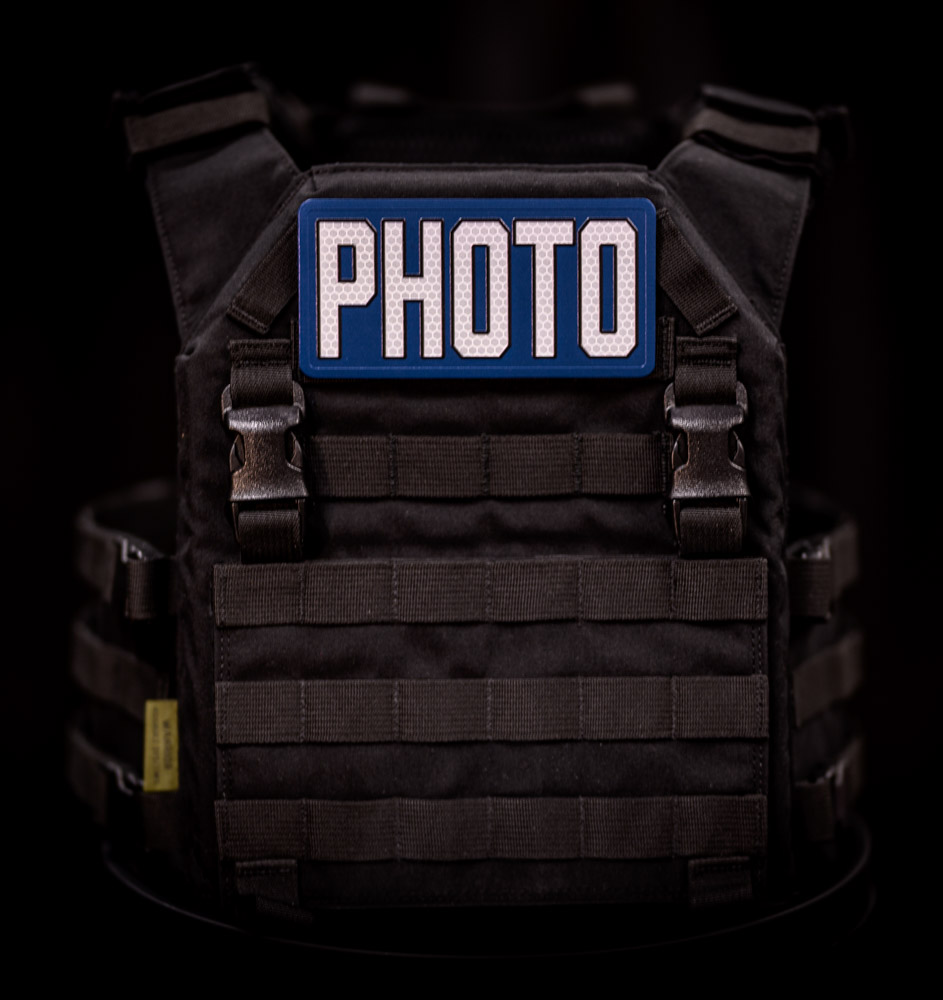Body Armor for Journalists
Posted by Steve Cassidy Former US Navy EOD, CEO EOD Gear on Nov 30, 2022
Body armor for journalists is not just for those in the Ukraine but for the Media around the globe covering the most important events that affect of world. In this time of increasing violence, journalists and photojournalists often find themselves in dangerous places, in situations that may get violent and where their safety is threatened.
To ensure their wellbeing, it is essential that journalists have access to the best possible protection. It is with this in mind that we consider the use of body armor for journalists in order to keep them safe while doing their important work.
Body armor is a necessity for anyone who must be in a dangerous place, including those in the Media. It offers a certain level of protection from physical threats including firearms. It also provides some degree of protection from blunt force trauma and stabbing. Furthermore, body armor can be used to protect against the various forms of physical assault journalists may face in their daily work.
In this post, we will explore the different types
Types of Protective Gear
Body armor is a must-have piece of protective gear for journalists working in dangerous and volatile environments. Depending on the situation, there are several types available to provide adequate protection. Soft armor is made of flexible materials like ballistic nylon and Kevlar, and is designed to protect against handgun rounds. Hard armor also known as Rifle Plates, on the other hand, is made from steel, ceramic plates and now with advanced in technology, polyethylene. These ballistic plates are designed to protect against rifle rounds. It is important to understand the differences between these types of armor and choose the one that best fits the situation. In some cases a ballistic helmet may be appropriate versus a bump helmet typically worn by some protestors.
How to Choose the Right Armor
When it comes to choosing the right protection for journalists, it's important to look for vests that are designed to protect from multiple types of threats. Ballistic vests should have a NIJ (National Institute of Justice) rating of IIIA or III, depending on the type of protection you’re looking for. Soft armor vests should also be rated NIJ IIIA or III alongside the additional option of stab-proof protection. Additionally, the armor should fit snugly to the body and be adjustable to accommodate a variety of sizes and body types. Finally, body armor should be lightweight and comfortable to wear for long periods of time.
Steel and Ceramic Rifle Plates are not lightweight. As a journalists covering fast-moving events you should look at the latest lightweight rifle plates that fit within a covert plate carrier that you can conceal under your regular attire. A covert vest that protects against all pistol and most rifle rounds should weigh less than 5 pounds. That is less than the weight of one pro camera and lens.
Best Practices for Wearing Body Armor
Body armor is a critical piece of equipment for journalists who are covering dangerous and unpredictable events. Body armor can protect journalists from projectiles, bullets and other forms of physical harm. When wearing body armor, it is important to follow best practices to ensure maximum protection and comfort.
Here are four of the best practices for wearing body armor:
- Always wear the armor properly—this means making sure it fits snugly and that all straps, fasteners, and other components are securely in place
- Use the correct armor for the level of protection needed. Choices include Level IIIA, Level III, Level IV
- Maintain the armor, including cleaning and regularly checking for wear and tear
- Replace the armor when it has exceeded its lifespan. Most armor is certified for 5 years. We offer 15 year certified plates.
Following these practices will ensure that journalists are properly protected and able to do their job safely.
Benefits of Wearing Lightweight Armor
Not just in the Ukraine. Journalists often find themselves in dangerous environments, and wearing lightweight armor can provide them with extra protection. There are several important benefits to wearing a bullet proof vest while on assignment.
The first benefit is protection from ballistic threats. Ballistic vests are designed to protect the wearer from bullets, knives, and other ballistic threats. It should be lightweight, allowing for faster movement over longer periods of time. Wearing a heavy vest along with your equipment can be soul crushing.
Second, body armor can provide protection from blunt force trauma. This is especially important if the journalist is in a riot or other volatile situation.
Third, ballistic protection provides psychological protection. Wearing body armor can give journalists the confidence to remain in dangerous environments and pursue their stories. You still need to be aware of your situation and know when it is time to leave. Don't become over confident.
Fourth, a ballistic vest can help protect against shrapnel and other airborne hazards. This is especially important for journalists reporting from conflict zones.
Finally, body armor can help protect journalists from potential assailants. In some cases, the presence of body armor may be enough to discourage an attack.
Where to Buy Body Armor
For journalists who may find themselves in dangerous situations, it is important to know where to buy body armor. It is also best to know where not to buy armor. Do not buy used armor! If it is ceramic, it could have been dropped and been broken rendering it worthless.
Most online stores only care about their revenue and shipping orders. Rarely will you find a place that has experienced staff that are former End User that understand what is important to you and guide you to the best solution for your environment as well as your budget..
At EOD Gear we all former End Users. We are the only company that sells large quantities of tactical gear and armor to government agencies as well as custom kits to individuals. We have 4,000 square feet of showroom for professionals like yourself to come in and try the gear on and get questions answered before purchasing any gear. Because we have large government contracts we don't rely on individual sales which allows us to be completely honest with you to ensure you get exactly what you need.
In conclusion, body armor for members of the press is an important tool to protect their safety while they do their jobs. It is a sad reality that media professionals must protect themselves, but body armor is a necessity in many cases. It's important to remember that journalists are on the frontlines informing us of what is happening in the world, and they should be protected while doing so. Body armor is one way to ensure that journalists remain safe while reporting.
EOD Gear has been supplying lightweight Level III and Level IV armor for years to agencies, commands and civilians. Stop in for a custom fit or contact us at 877-363-2626 to schedule a consultation.


